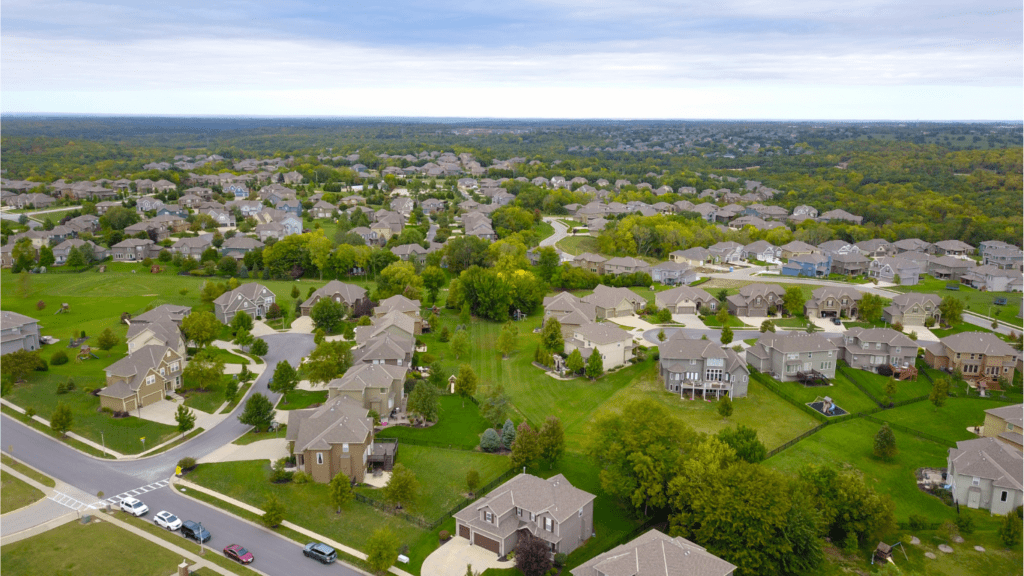Shift in Homebuyer Preferences
The shift in homebuyer preferences stems from several key factors. Space is a primary driver; suburban homes often offer larger square footage and more rooms than urban apartments. For instance, families find suburban homes with multiple bedrooms and outdoor spaces appealing.
Remote work has further influenced these preferences. With many companies adopting flexible work policies, professionals can live farther from their offices. This change reduces the necessity to live in crowded city centers, prompting a move to quieter, more spacious suburban areas.
Affordability also plays a crucial role. Suburban real estate typically costs less per square foot compared to urban properties, making it more attractive, especially for first-time buyers. Lower property taxes in many suburban regions add to the affordability factor.
Safety and quality of life are significant considerations. Suburban areas usually report lower crime rates and offer more green spaces, enhancing the appeal for families. Quality schools and family-friendly amenities also contribute to the preference shift.
Community engagement is another important element. Suburban settings often foster tighter-knit communities with neighborhood events and local clubs. Buyers looking for a strong sense of community are increasingly drawn to these areas.
This combination of space, affordability, safety, and community underscores why more homebuyers are favoring suburban locales over urban settings.
Affordability Factor
The affordability of suburban homes has become a major draw for homebuyers. I’d like to highlight the lower cost of living and competitive pricing in these areas.
Lower Cost of Living
Suburban areas often have a lower cost of living compared to urban settings. I observe that everyday expenses such as groceries, gas, and utilities (electricity and water) tend to be more manageable. In many suburbs, property taxes are also lower, contributing to overall financial savings. These factors make suburban living more financially viable for families and individuals looking to optimize their budgets.
Competitive Pricing
Homes in suburban areas generally offer more square footage and amenities at lower prices than their urban counterparts. I’ve noticed that buyers can often find larger homes with yards, multiple bedrooms, and modern upgrades without exceeding their budgets. Suburban real estate markets also tend to be more stable, reducing the risk of price volatility seen in urban markets. This competitive pricing brings a significant advantage, enabling more families to afford spacious, comfortable homes.
Space and Comfort
Suburban areas attract homebuyers due to the promise of greater space and comfort compared to urban settings.
Larger Homes
Suburban homes often have more square footage and expansive floor plans. For example, the average suburban house measures around 2,500 square feet, whereas urban homes tend to average about 1,000 square feet. This additional space accommodates growing families and allows for more diverse use of rooms, such as home offices, gyms, or guest quarters. Larger homes also mean fewer vertical structures and more single-family properties, which appeal to those desiring privacy.
Outdoor Spaces
Suburban properties frequently feature larger yards and outdoor areas. These outdoor spaces can include gardens, patios, and play areas for children. For instance, many suburban homes include backyards that are ideal for family activities or personal relaxation. Broader landscapes also offer opportunities for home gardening, small-scale farming, or installing recreational amenities like swimming pools. Those seeking a connection to nature and outdoor activities are drawn to the ample green spaces commonly found in suburban areas.
Quality of Life

Suburban living enhances the overall quality of life, offering a balanced mix of comfort, convenience, and community-focused living.
Schools and Education
Suburban areas often boast top-rated schools and educational institutions. According to the National Center for Education Statistics, suburban schools consistently outperform their urban counterparts in terms of test scores and graduation rates. This makes suburbs an attractive option for families prioritizing education. Besides primary and secondary education, many suburbs have access to reputable colleges and universities, ensuring comprehensive academic growth for students.
Community and Safety
Community-focused living sets suburbs apart from urban settings. Suburban neighborhoods typically feature tight-knit communities with shared activities and events that foster strong relationships. Features like:
- parks
- community centers
- local businesses
create social hubs for residents. According to the Federal Bureau of Investigation (FBI), suburban areas report lower crime rates compared to urban locations, enhancing a sense of safety and security. Families value this peace of mind, as it contributes to a nurturing environment for raising children.
Transportation and Connectivity
Transportation and connectivity have significantly boosted the attractiveness of suburban areas for homebuyers. Enhanced transit options and the rise in remote work have reshaped how people choose their residences.
Improved Infrastructure
Enhanced infrastructure has improved the accessibility of suburban areas. Many suburbs now have expanded public transportation networks, making commuting efficient. For example, suburban rail lines, express buses, and park-and-ride facilities connect seamlessly to urban centers. These developments reduce travel time and increase the convenience of daily commutes.
Work From Home Transition
Remote work has also played a crucial role. Many employers now offer flexible work-from-home policies, allowing employees to reside further from their workplaces without sacrificing job performance. This shift has encouraged homebuyers to explore suburban areas, where they find larger living spaces at more affordable prices, coupled with the opportunity for a dedicated home office.
Real Estate Market Trends
Current trends reveal a growing preference for suburban living. Let’s explore specific dynamics shaping this shift.
Demand and Supply Dynamics
- A notable surge in demand for suburban homes is evident.
- Factors like remote work and larger living spaces drive this trend.
- According to the National Association of Realtors, suburban homes’ sales spiked by 22% in 2022. Supply, however, struggles to keep pace, with new construction lagging behind demand.
- This imbalance has led to increased property values, boosting competition among buyers.
- Limited inventory has prompted faster sales cycles, with suburban homes spending an average of just 21 days on the market compared to 35 days in urban areas.
Investment Potential
Suburban areas exhibit significant investment potential. Property values have seen a steady rise, making suburban real estate a promising asset. For instance, suburban home prices rose by 12% annually over the past three years, according to Zillow. Rental demand has also increased, providing lucrative opportunities for investors.
Suburban properties near amenities like schools, parks, and public transportation tend to attract higher rents, ensuring favorable returns on investment. Furthermore, planned infrastructure improvements and community developments are likely to enhance property values over time, making these areas attractive for long-term investments.


 Tara Salcedoner, the founder of Villa Estates Luxe, is a visionary leader in the luxury villa market, dedicated to providing valuable insights and resources for buyers, investors, and property managers. With a focus on current real estate trends and comprehensive market analysis, Tara ensures that the platform remains a trusted source of information. Her commitment to enhancing the luxury living experience through smart home technology and effective property management strategies has positioned Villa Estates Luxe as a premier resource in the industry.
Tara Salcedoner, the founder of Villa Estates Luxe, is a visionary leader in the luxury villa market, dedicated to providing valuable insights and resources for buyers, investors, and property managers. With a focus on current real estate trends and comprehensive market analysis, Tara ensures that the platform remains a trusted source of information. Her commitment to enhancing the luxury living experience through smart home technology and effective property management strategies has positioned Villa Estates Luxe as a premier resource in the industry.